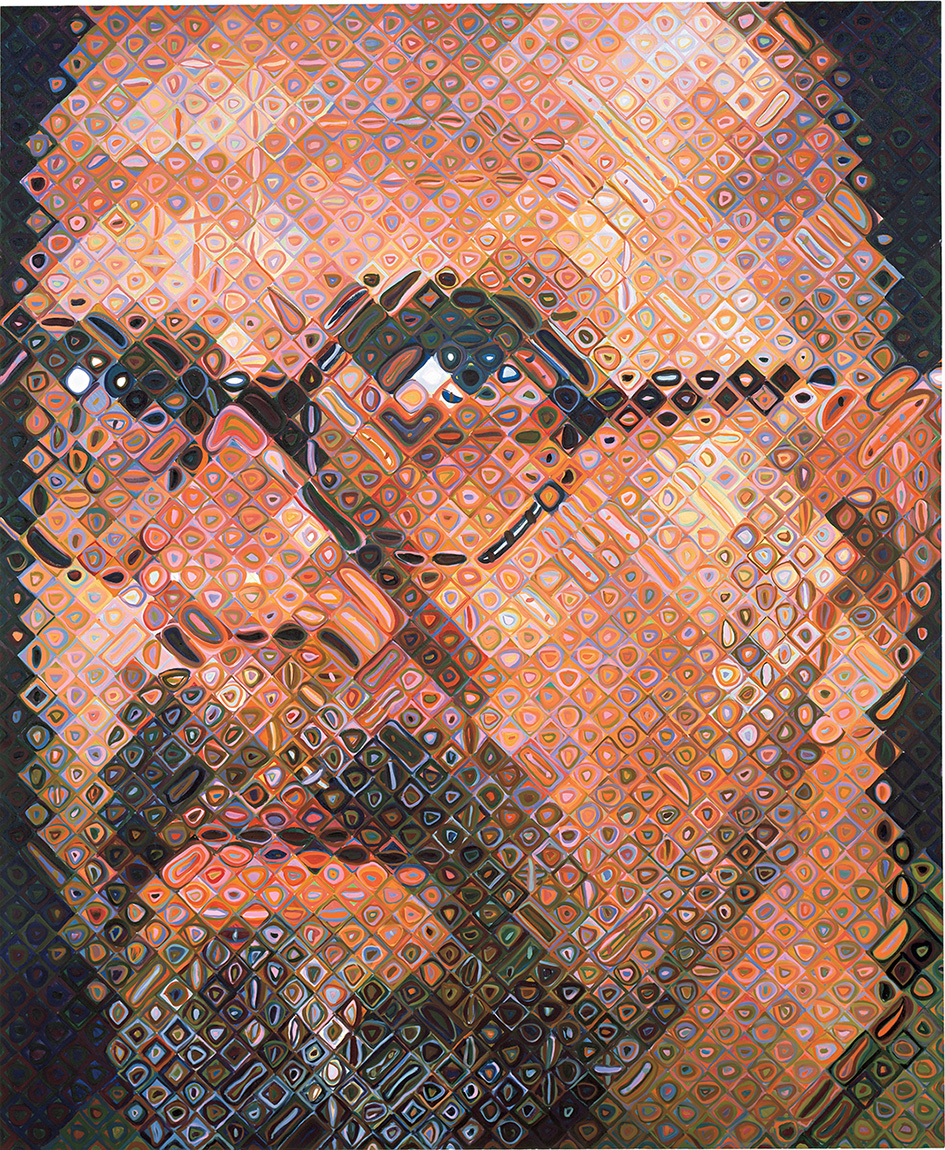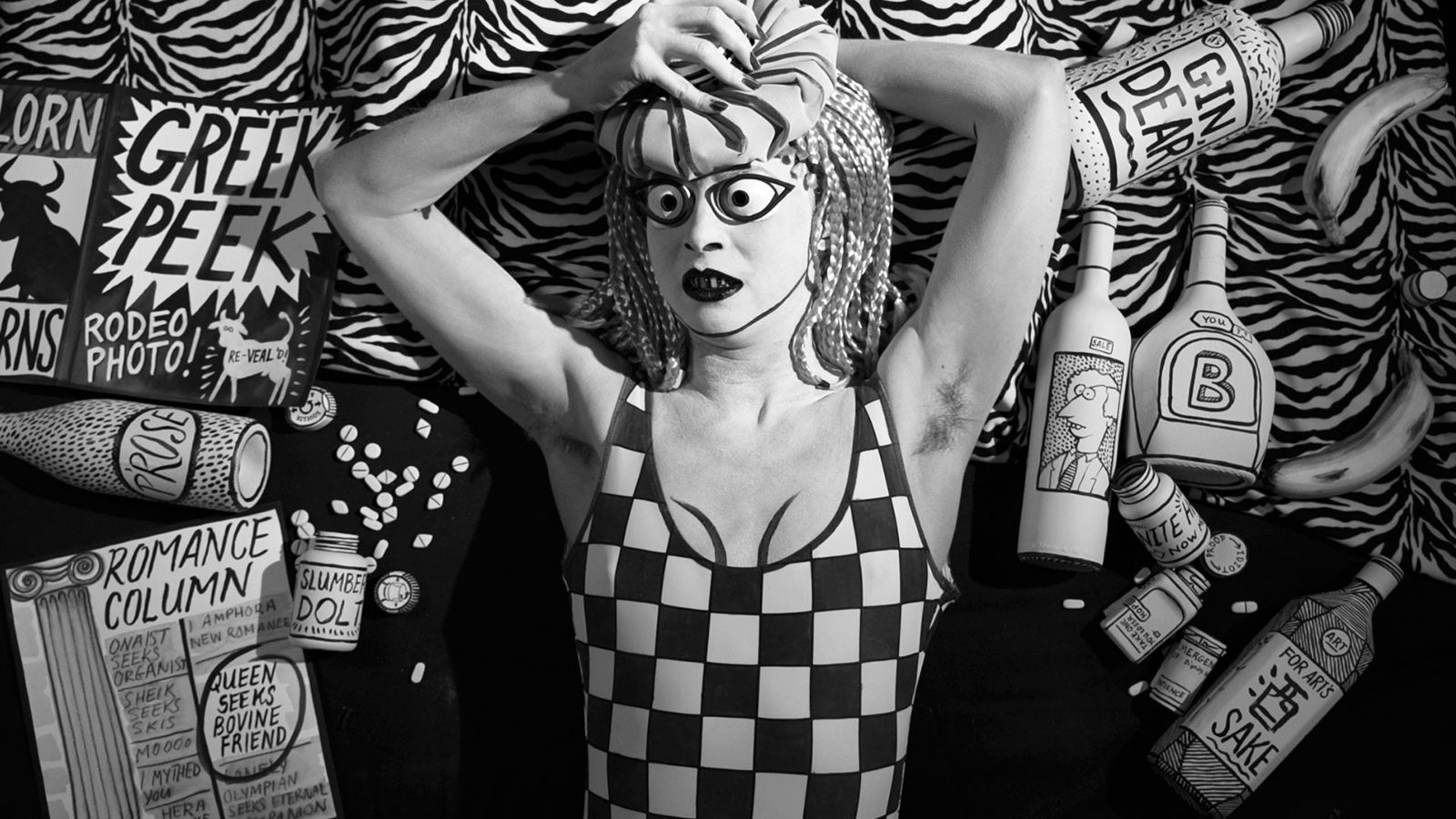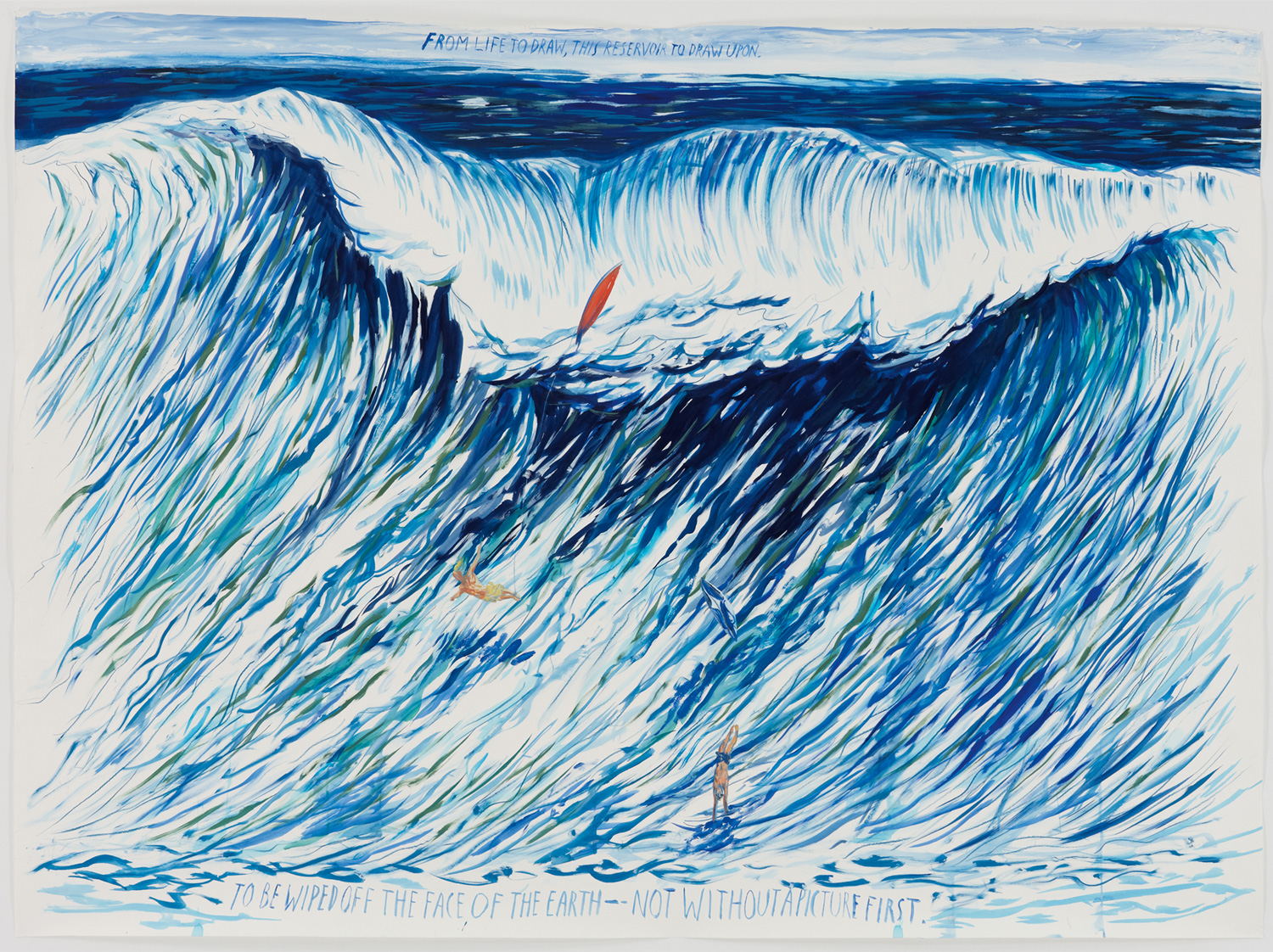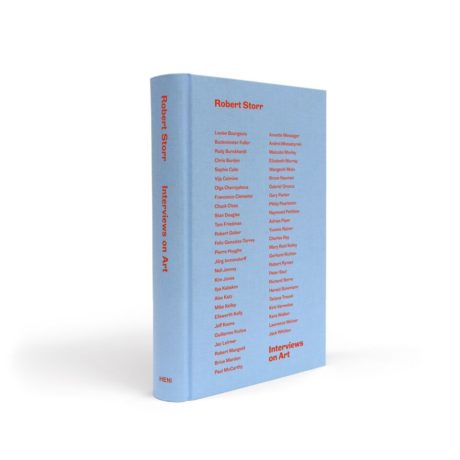
Chuck Close, Self-Portrait, 1997
© Chuck Close, courtesy Pace Gallery. Photo: Ellen Page Wilson
A few years ago when I had just begun writing as well as interviewing artists, I was at a press opening in London at which the artist was present. I was amazed—and relieved—to find journalists with far more experience than myself ask questions that I would always have considered to be too “easy”: Why do you use a lot of black? What were you thinking when you made this? Can it be shown the other way up? Until that point, I had always felt like an interview question needed to have a million different points wound into it to warrant a response—a beginning a middle and an end; a dramatic final act. Clearly not all questions need to be quite as undemanding as the examples given, but seeing the artist respond well and answer apparently simple questions with keen enthusiasm was a real turning point for me. I began to realize it was often the convoluted questions that led to the most annoyed or bored answers (though, I probably am still guilty of these from time to time) and that the best results come from natural, informed conversation.

Courtesy the artists
“A common thread among these dialogs with such a diverse array of artists—of different generations and of different formal and poetic inclinations—is that you ask questions without showing off,” says Francesca Pietropaolo, in Interviews on Art’s opening conversation with its author Robert Storr. “The interview is a form for finding things out,” Storr responds. “An important component is resisting the temptation to show the artists how much you already know about their work, as well as the temptation to show off to the reader how smart you are. Academics are too often prone to ask questions that make the artists’ answers more and less superfluous.”
“Peter Saul, for instance, was somebody I argued with when I was a student and have argued with ever since.”
The opening conversation is a fascinating read, especially for anyone attempting to tread the same ground and make the most of their conversations with artists, learning how to listen as much as how to speak (to be honest, the nuggets of advice offered here don’t just apply to conversations with artists, there aren’t many of us who don’t need to brush up on our listening skills). He also gives a personal insight into many of the artists with whom he speaks—connecting with them in many instances as people as well as subjects to study, his discussions of their work and drive infused with personal knowledge. On Peter Saul, he writes: “Peter’s father sent him to a very severe English boys’ school where, as was customary, he was frequently beaten for misbehavior. So he has experienced a lot of abuse early in his life. If you know that, then the stuff that he puts in his pictures is not so hard to understand. You may never grasp the nitty-gritty of it, but if you are aware that his fascination with extreme violence is the synthesized effect of genuine trauma in his life then his over-the-top sight gags are no longer just vulgar comedy, the grotesque in his work is no longer merely self-indulgent caprice.”

Private Collection © Peter Saul, courtesy the artist
That said, it isn’t all matey-matey, and he gladly accepts tension as par for the course and another reason to keep delving and speaking with someone. “Peter Saul, for instance, was somebody I argued with when I was a student and have argued with ever since,” he says, “which is to say, on and off for thirty-five years!”
There are over fifty artists interviewed within Interviews on Art, a book that benefits hugely from Storr’s long-running relationship with his subjects, revisiting many of them often multiple times to keep conversations flowing and developing a natural repertoire—one he claims is helped to a great deal by his status as an artist, allowing him in many ways to be seen as an insider and no doubt endowing him with a sense of the artist’s psychology. It’s a formidable list, with names such as Koons, Nauman, Bourgeois and Katz presented in a more personable manner than we may get in interviews that have been conducted with a stranger in a limited time.
“An important component is resisting the temptation to show the artists how much you already know about their work.”
There are many fluctuations in interview style from person to person. With Louise Bourgeois, an ongoing conversation partner, the form of questions and answers are spar-like, sentence for sentence in some parts, infused, of course, with Bourgeois’s emotional honesty. The email interview with Olga Chernysheva, on the other hand, displays the characteristic consideration that is enabled by written conversation, as each party can labour a little longer over their responses and present themselves in a more considered and lengthy manner. I enjoy the conversations in person the most, but the mix allows a further interrogation of the nature of interviewing itself (alongside the interviews, there are also edited artist statements that have been provided to Storr over the years).

Raymond Pettibon, No Title (From life to…), 2011
© Raymond Pettibon, courtesy the artist, David Zwirner, New York and Artists for Haiti
One of Storr’s noted intensions with his particular style of interviewing is to allow the artist a space in which they can open up. While some artists need little encouragement, there are of course some who, while not necessarily clamming up, are very well-versed in speaking their lines. His conversation with Jeff Koons from 1990 is a particularly interesting one, where we see a great deal of consideration for each question and indeed an in-depth and open response, but where the character of Koons feels hard to shake despite ongoing probing from Storr. As he mentions himself: “A mask gives people freedom. It lets them live in the present and makes their insecurity disappear.”
This is a book of brick-like proportions, and it doesn’t necessarily need to be consumed whole, it lends itself to snacking, popping in and out of contact with the interviewees as Storr has done over the years. A must-read for anyone who regularly converses with artists—and a wonderful insight for anyone else.
Robert Storr: Interviews on Art
Published 21 November with Heni Publishing
To win a copy of the book, visit Elephant on Instagram, Facebook or Twitter
PREORDER NOW





